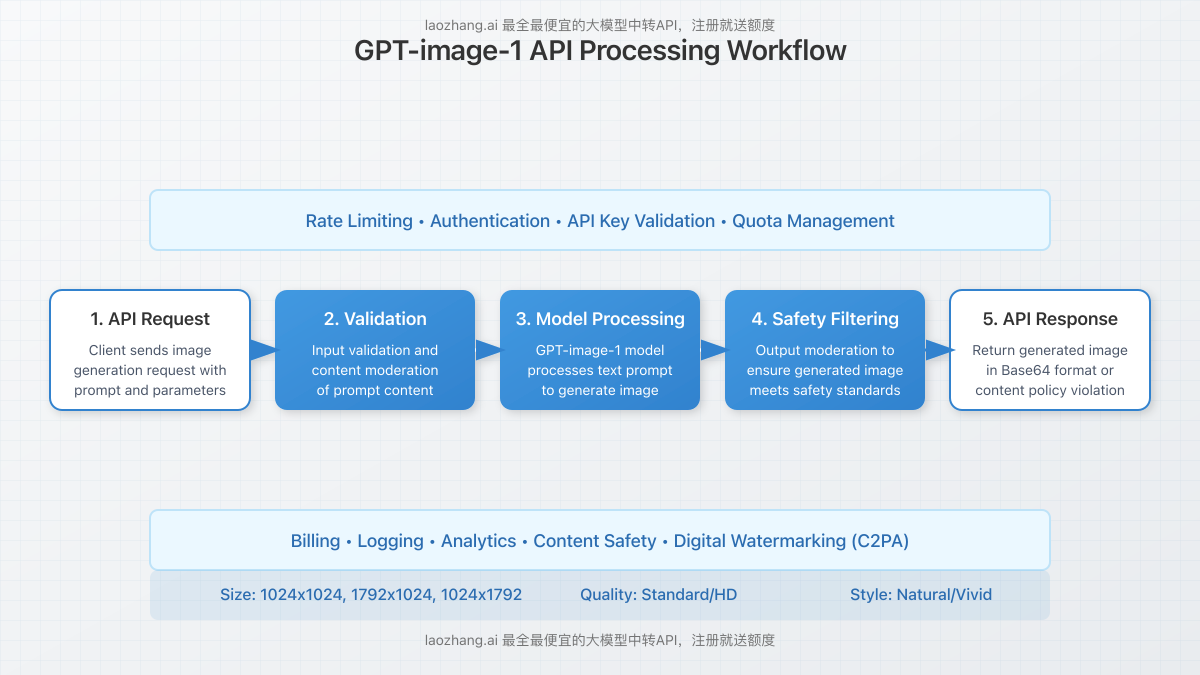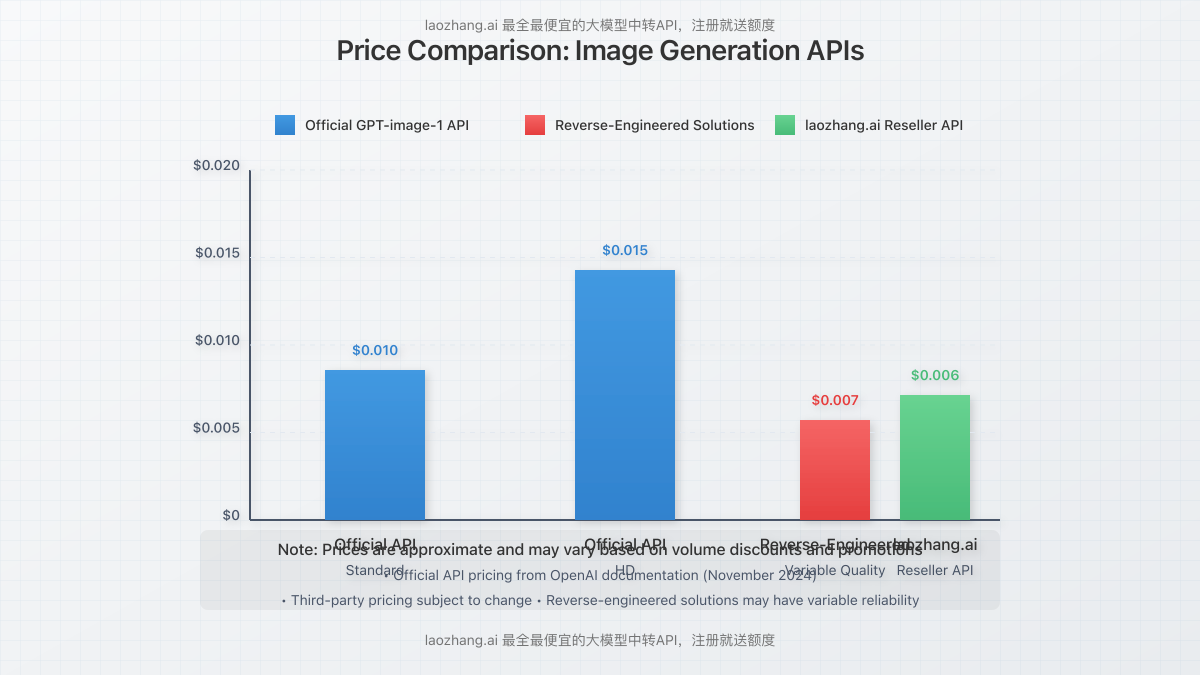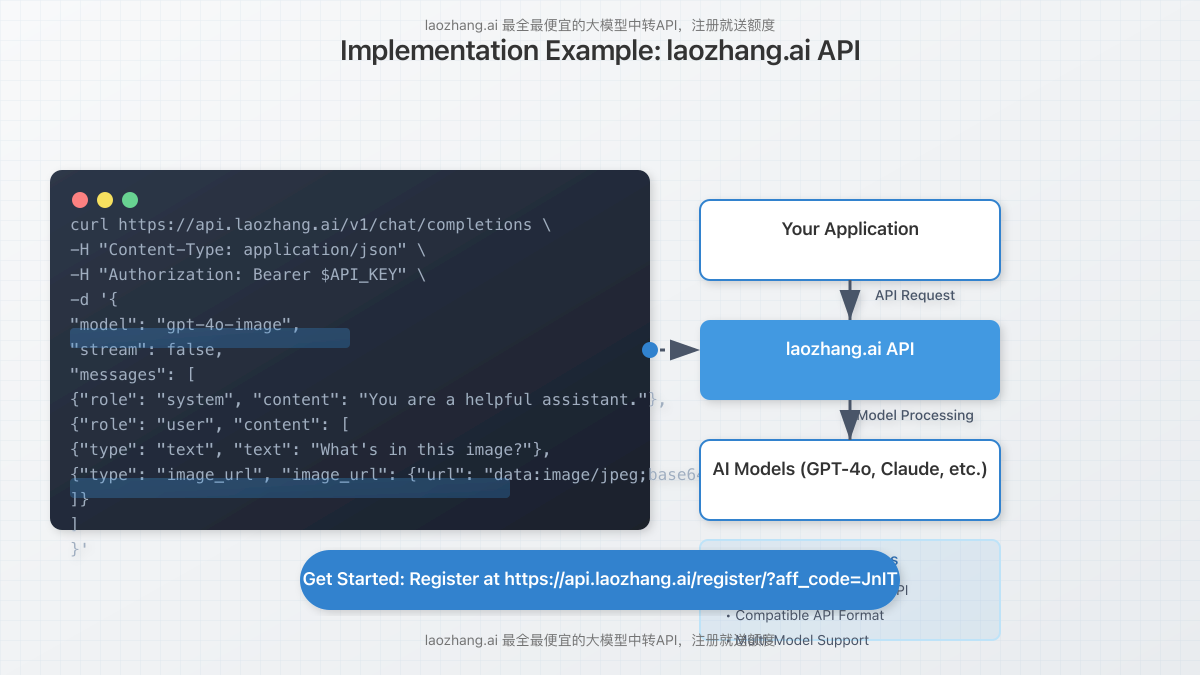Reverse Engineering GPT-Image-1 API: Value After Official Release?
November 5, 2024 • Updated November 5, 2024

Introduction: The Race for AI Image Generation APIs
The landscape of AI image generation changed dramatically when OpenAI officially released the GPT-image-1 API. Before this official release, developers and companies had been using reverse-engineered solutions to access these capabilities. This article examines whether these unofficial APIs still hold value in a market now dominated by an official solution.
For developers and businesses requiring affordable access to advanced AI models, third-party API providers like laozhang.ai offer cost-effective alternatives to direct API access, with free credits upon registration.
Understanding Reverse-Engineered APIs
Reverse engineering refers to the process of examining and analyzing a product to extract information about its design, functionality, and implementation. In the context of AI APIs, this typically involves:
- Analyzing network traffic between web clients and servers
- Replicating authentication mechanisms
- Creating unofficial wrappers around web interfaces
- Building middleware to translate requests into formats accepted by the original service

The Evolution of GPT-Image API Access
Before OpenAI released the official GPT-image-1 API, access to their advanced image generation capabilities was limited. This created a market opportunity for third-party developers to create workarounds:
Pre-Official Release Landscape
- Web UI Wrappers: Solutions that simulated browser interactions with OpenAI’s web interface
- Proxy Services: Intermediary services that processed and forwarded requests to OpenAI’s servers
- Alternative Implementations: Some developers created similar (though typically less powerful) alternatives based on open-source models
Official GPT-image-1 API Features
The official API released by OpenAI introduces several advantages:
- Guaranteed service reliability and uptime
- Official documentation and support
- Consistent response format and error handling
- Service level agreements (SLAs)
- Integration with other OpenAI services

Technical Comparison: Official vs. Reverse-Engineered Solutions
| Feature | Official GPT-image-1 API | Reverse-Engineered Solutions |
|---|---|---|
| Generation Speed | Under 1 minute per image | Variable, typically slower |
| Reliability | High (99.9%+ uptime) | Medium to Low (subject to changes in original service) |
| Rate Limits | Clearly defined, based on subscription | Inconsistent, may be throttled unexpectedly |
| Legal Status | Fully compliant with OpenAI’s terms | Potentially violates terms of service |
| Documentation | Comprehensive | Limited or community-driven |
| Safety Features | Robust content filtering and moderation | Variable implementation of safety features |
| Cost | Higher but predictable | Often lower but may have hidden costs |
Price Analysis and Cost Considerations
One of the primary reasons developers turn to reverse-engineered solutions is cost. The official GPT-image-1 API is priced based on:
- Image resolution (higher resolution = higher cost)
- Quality tier selected
- Volume of requests
For developers with limited budgets or startups exploring AI integration, the cost difference can be significant. Third-party providers like laozhang.ai offer more affordable access points with similar functionality.

Use Case Evaluation: When to Choose Each Option
Ideal Scenarios for Official API
- Enterprise Applications: When reliability and legal compliance are critical
- Commercial Products: Services where inconsistent results would harm user experience
- High-Volume Applications: Systems requiring predictable scaling and performance
- Sensitive Content: Applications where content safety and filtering are essential
Scenarios Where Reverse-Engineered APIs Still Have Value
- Prototyping: Early-stage development where costs need to be minimized
- Educational Projects: Learning environments where budget constraints exist
- Hobby Applications: Non-commercial projects with limited resources
- Testing: Preliminary testing before committing to the official API
Implementation Examples: Using laozhang.ai API
For those seeking an affordable alternative, laozhang.ai provides access to various AI models including GPT-4o with image capabilities. Here’s a simple implementation example:
curl https://api.laozhang.ai/v1/chat/completions \
-H "Content-Type: application/json" \
-H "Authorization: Bearer $API_KEY" \
-d '{
"model": "gpt-4o-image",
"stream": false,
"messages": [
{"role": "system", "content": "You are a helpful assistant."},
{"role": "user", "content": [
{"type": "text", "text": "What's in this image?"},
{"type": "image_url", "image_url": {"url": "data:image/jpeg;base64,/9j/4AAQSkZ..."}}
]}
]
}'This approach provides similar functionality to the official API but often at a fraction of the cost, making it ideal for developers looking to leverage AI image generation capabilities without the premium price tag.

The Future of Reverse-Engineered APIs
As OpenAI continues to refine its official APIs, the future of reverse-engineered solutions remains uncertain. Several factors will influence their continued relevance:
Factors Affecting Longevity
- Price Adjustments: If OpenAI reduces official API prices, the value proposition of alternatives decreases
- Technical Barriers: Increasing security measures may make reverse engineering more difficult
- Legal Actions: Potential enforcement of terms of service could impact unofficial API providers
- Feature Gap: As new capabilities are added to official APIs, unofficial versions may fall behind
Conclusion: Making the Right Choice
The value of reverse-engineered GPT-image APIs hasn’t disappeared with the official release, but their position in the market has certainly shifted. They now primarily serve specific niches where cost sensitivity outweighs other concerns.
For most commercial applications, the official GPT-image-1 API represents the most sustainable long-term solution. However, for those seeking a middle ground, services like laozhang.ai provide legitimate reseller options that balance cost, reliability, and legal compliance.
As with most technology decisions, the right choice depends on your specific use case, budget constraints, and risk tolerance. By understanding the trade-offs between official and unofficial solutions, you can make an informed decision that best serves your project needs.
Get Started with Cost-Effective AI Image Generation
Register with laozhang.ai today to receive free credits and access to advanced AI models including Claude and ChatGPT at affordable rates.
Frequently Asked Questions
Is using reverse-engineered APIs legal?
While not illegal in most jurisdictions, using reverse-engineered APIs typically violates the terms of service of the original provider. This could potentially result in account termination or other consequences.
How does image generation quality compare between official and unofficial APIs?
The underlying model capabilities are identical, but official APIs usually provide more consistent results and better error handling, which can affect the overall quality of the end product.
Can reverse-engineered APIs access all the same features as the official API?
Generally no. Unofficial APIs typically lag behind in implementing new features and may never support certain advanced functionality, especially features related to enterprise management or compliance.
Are there any security risks with using unofficial APIs?
Yes. Unofficial APIs may not implement the same security standards as official ones, potentially exposing your data or API keys to greater risk. Additionally, the providers themselves may not have robust security practices.
How reliable are API resellers like laozhang.ai?
Reliability varies by provider. Established resellers with good track records typically offer reasonable uptime and support, though still generally less than official APIs. It’s advisable to research reputation and read reviews before committing.
What happens if OpenAI changes their systems and breaks reverse-engineered APIs?
This is a common occurrence. When the underlying systems change, unofficial APIs may stop working until their developers update them. This can result in downtime for your applications, which is why mission-critical systems should use official APIs.